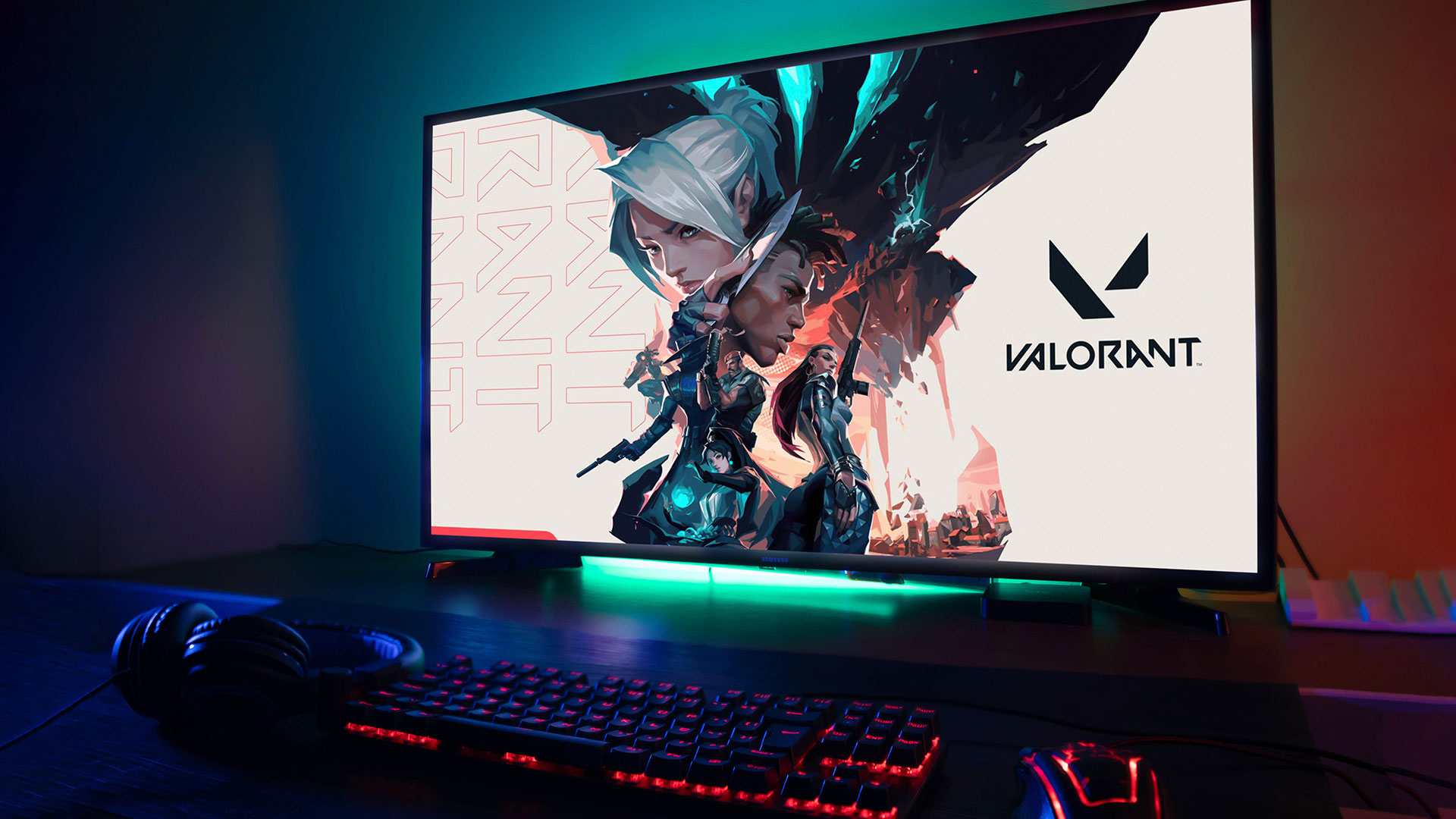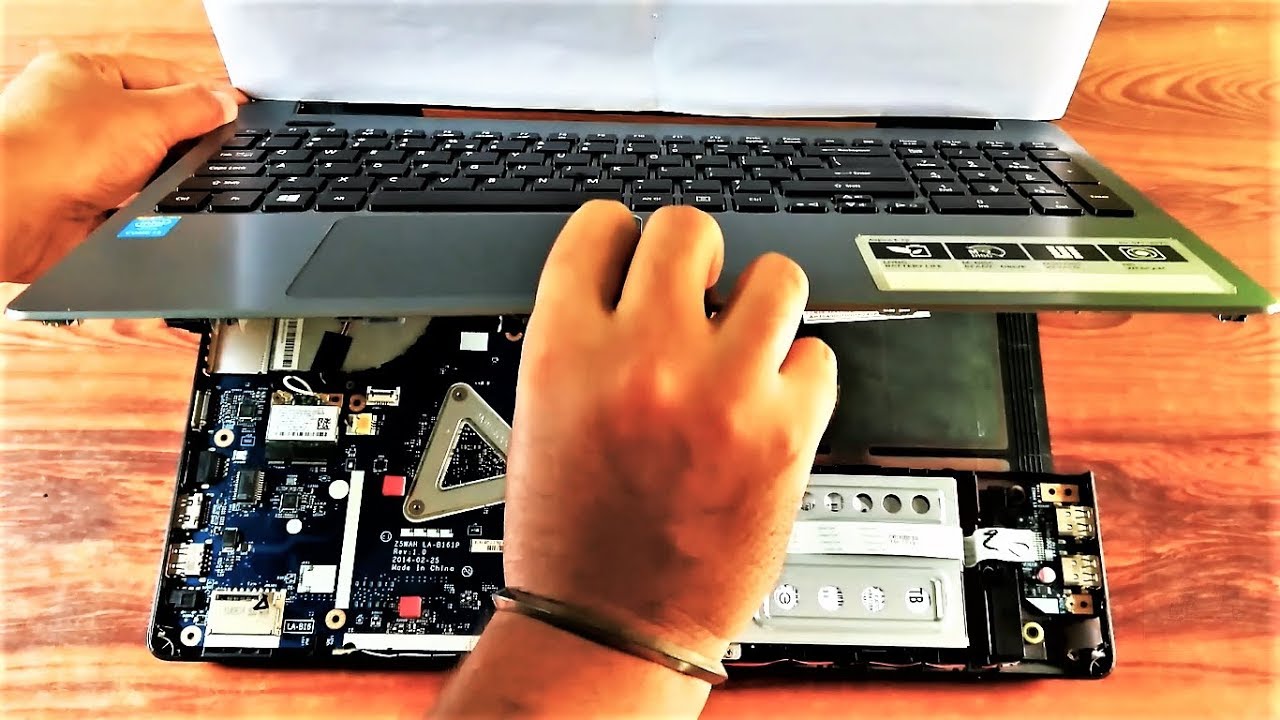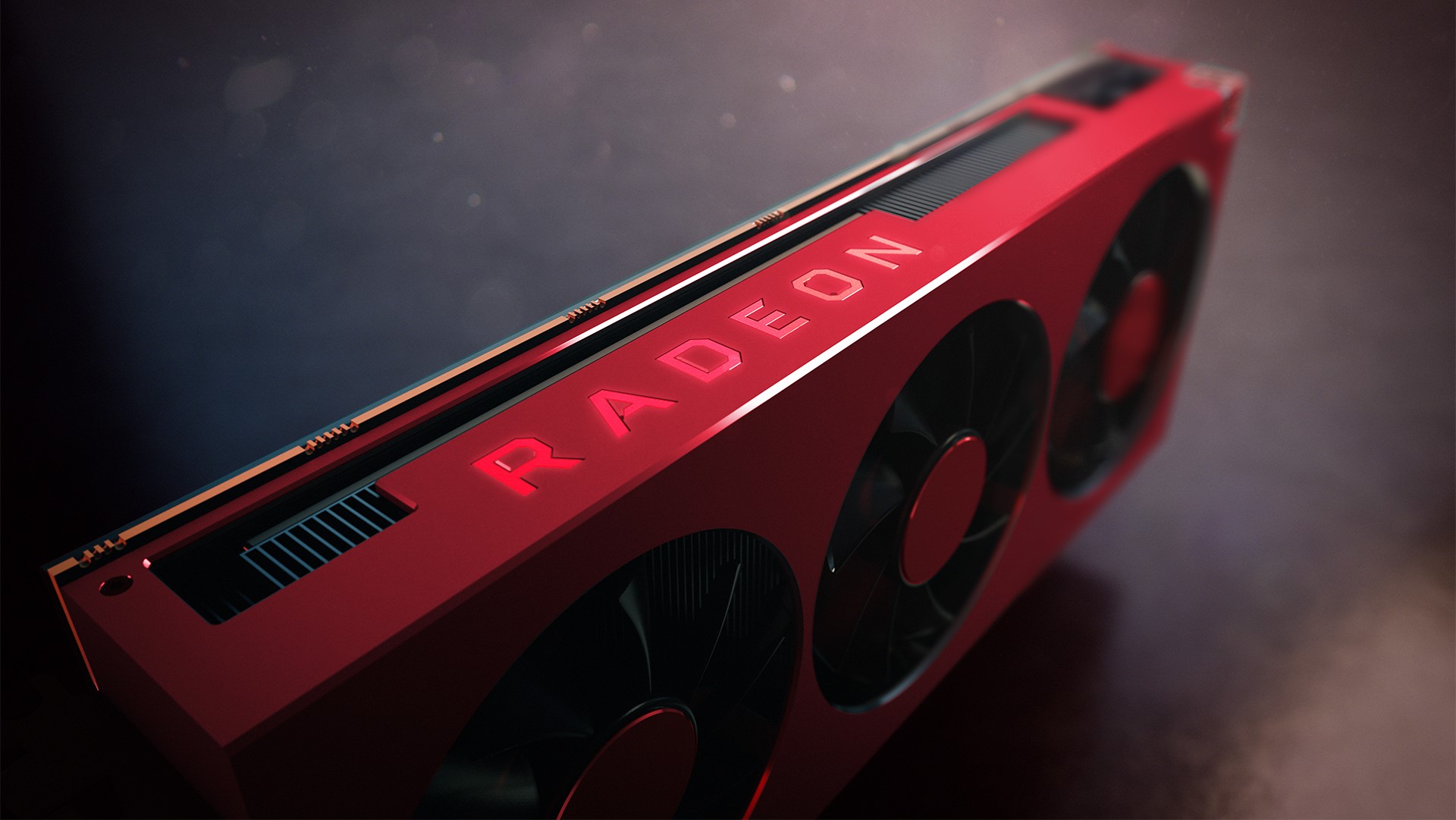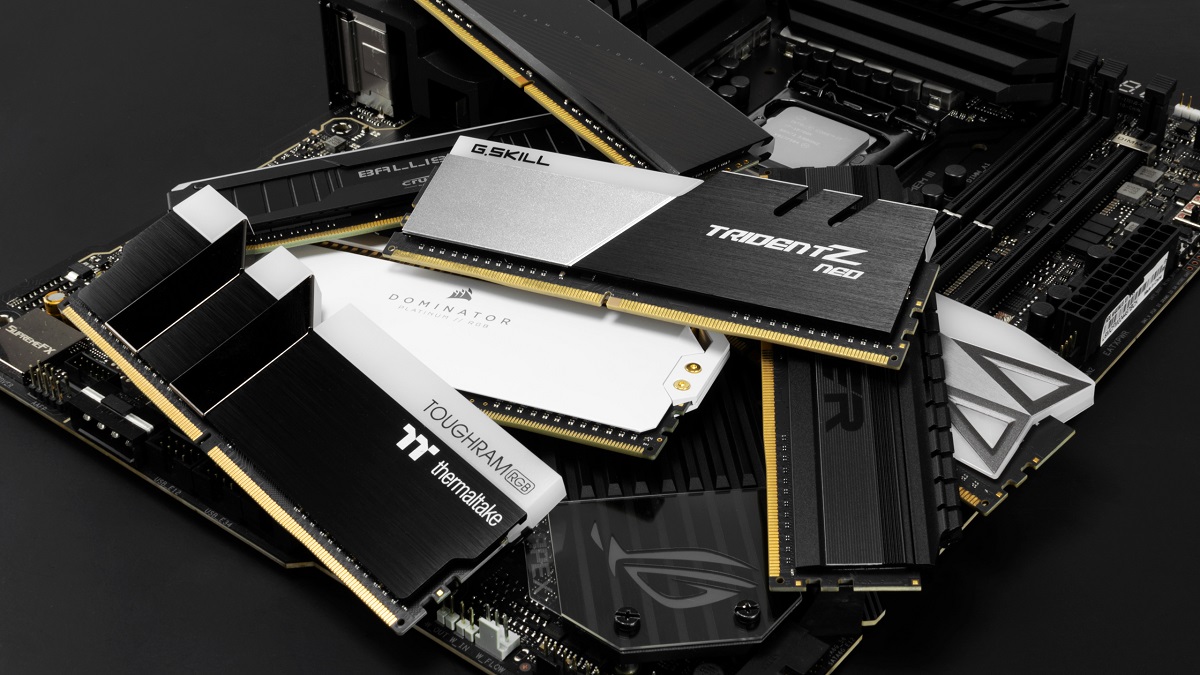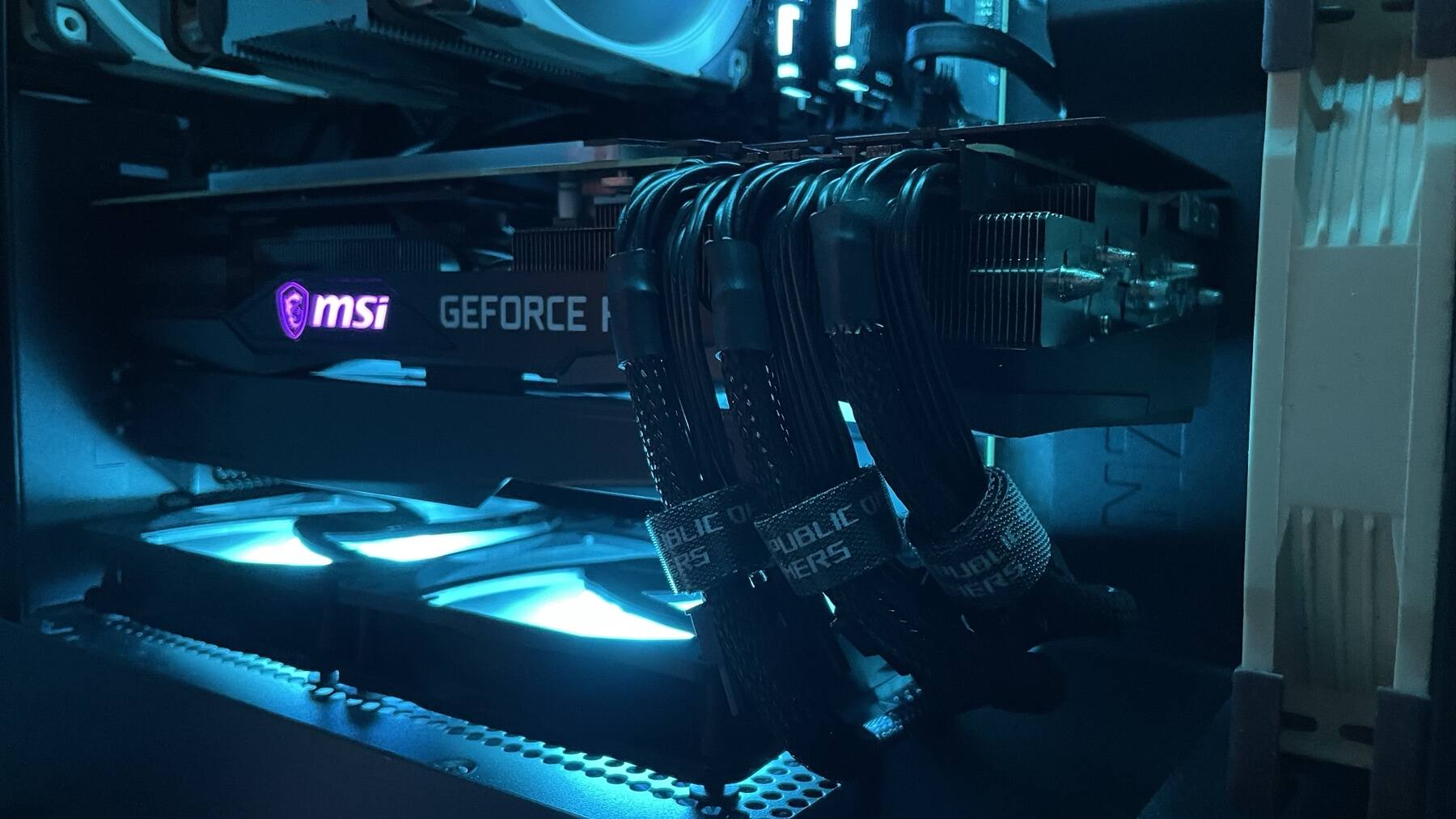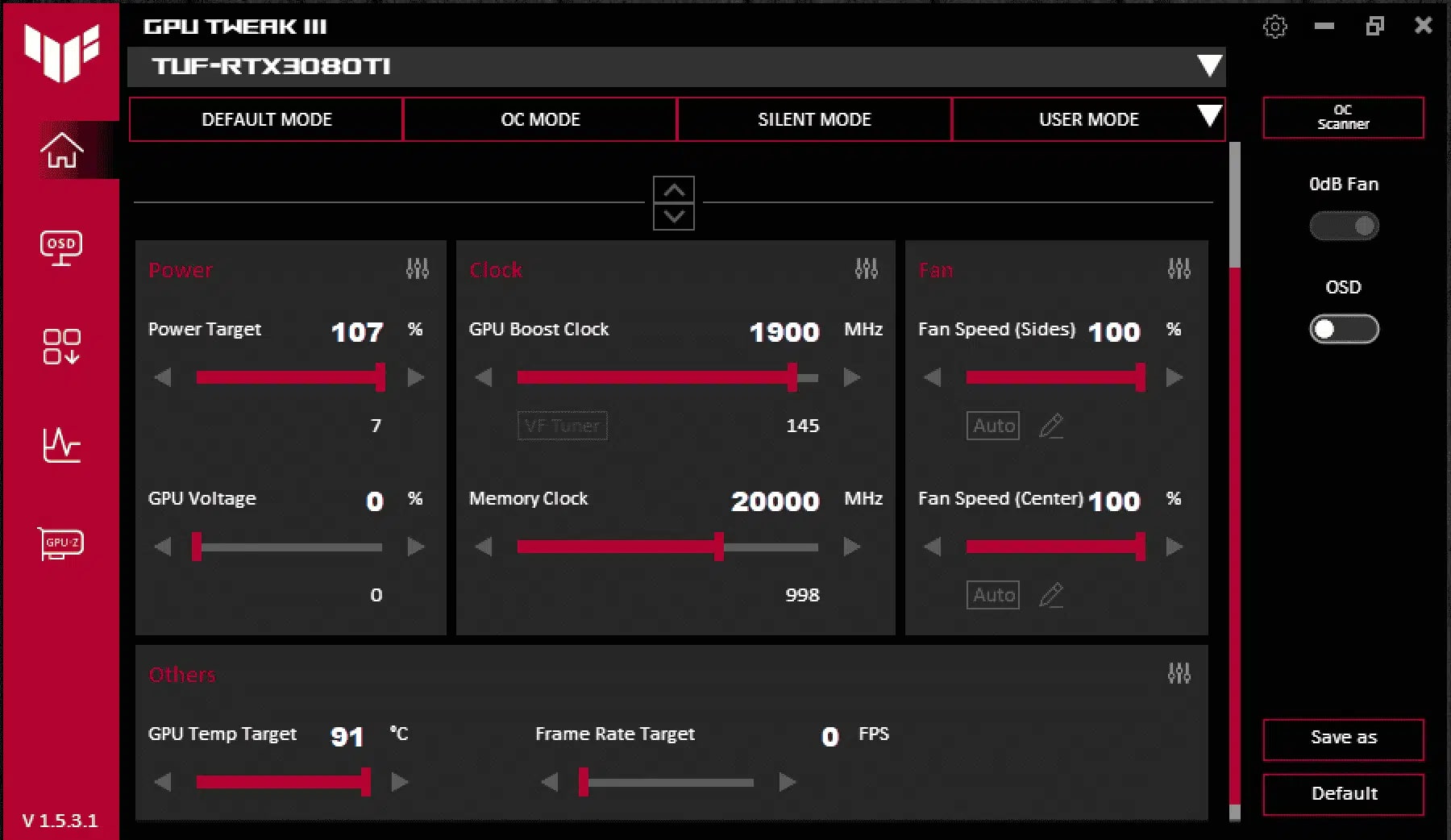Introduction
Graphics cards play a crucial role in powering the visual experience on our computers, whether it’s gaming, graphic design, video editing, or even just everyday tasks. Many users seek ways to maximize the performance of their graphics card, and one popular method is overclocking. But how do you know if your graphics card is overclocked? In this article, we will explore what overclocking entails and provide you with methods to check if your graphics card is operating at an overclocked speed.
Before diving into how to determine if your graphics card is overclocked, let’s briefly explain what overclocking actually means. In basic terms, overclocking refers to pushing your graphics card beyond its factory-set limits to achieve higher clock speeds and improved performance. It involves adjusting the voltage and frequency settings of the card to achieve faster processing speeds, resulting in enhanced graphical capabilities.
There are several reasons why users opt to overclock their graphics cards. The most obvious benefit is improved performance in graphics-intensive tasks such as gaming. Overclocking can provide a boost in frame rates, allowing for smoother gameplay and a more immersive experience. Additionally, it can benefit professionals who rely on graphics-intensive applications, such as 3D modeling or video editing software, as it reduces rendering times and increases overall productivity.
Now that we have a grasp of what overclocking entails and its potential benefits, let’s discuss how to check if your graphics card is overclocked. There are a few methods you can utilize to determine the operating speed of your graphics card, ranging from using manufacturer-provided software to third-party applications and monitoring tools.
What is overclocking?
Overclocking is the process of increasing the clock speed of a component beyond its default settings to achieve higher performance. In the context of graphics cards, overclocking involves pushing the GPU (Graphics Processing Unit) to run at a faster speed than what the manufacturer has set as the default. This results in increased processing power, which can lead to improved graphics performance and smoother gameplay.
The clock speed refers to the speed at which the GPU processes information and performs calculations. By overclocking, users attempt to extract more processing power from their graphics cards, allowing them to handle more demanding tasks and produce better visuals. However, it is important to note that overclocking can potentially void the warranty on your graphics card and may pose some risks if not done properly.
To overclock a graphics card, users typically adjust two key settings: the core clock and the memory clock. The core clock controls the speed at which the GPU cores operate, while the memory clock determines the speed at which the card’s memory components can read and write data. By increasing both of these clock speeds, the overall performance of the graphics card can be enhanced.
The process of overclocking can be done through various methods. Some users prefer to manually adjust the settings in the graphics card’s BIOS (Basic Input/Output System), while others utilize software tools provided by the manufacturer or third-party applications. These tools allow users to modify the clock speeds, voltage, and other parameters to fine-tune the performance of their graphics card. It is worth noting that not all graphics cards are created equal, and the potential for overclocking can vary depending on the model and manufacturer.
It is important to approach overclocking with caution, as there are potential risks involved. Pushing the graphics card beyond its limits can lead to overheating, instability, crashes, and even permanent damage to the hardware. Therefore, it is recommended to gradually increase the clock speeds and monitor the temperature and stability of the system during the process.
Benefits of overclocking your graphics card
Overclocking your graphics card can offer several advantages, especially for users who engage in graphics-intensive tasks such as gaming, video editing, and 3D rendering. Here are some of the key benefits of overclocking your graphics card:
- Improved Performance: One of the primary advantages of overclocking is the potential for increased performance. By pushing your graphics card beyond its default settings, you can achieve higher clock speeds and better frame rates in games, resulting in smoother and more responsive gameplay.
- Enhanced Graphics Quality: Overclocking can lead to improved graphics quality in games and other visually demanding applications. Higher clock speeds can allow your GPU to render more complex scenes, textures, and lighting effects, resulting in more detailed and realistic visuals.
- Faster Rendering and Processing: When working with graphic design software or editing videos, overclocking your graphics card can significantly reduce rendering and processing times. Increased clock speeds mean faster calculations and data transfer, resulting in quicker completion of tasks.
- Extended Usability of Older Graphics Cards: Over time, as new and more demanding games and applications are released, older graphics cards may struggle to keep up. Overclocking can breathe new life into these older cards by boosting their performance and allowing them to handle newer software with greater ease.
- Cost Savings: In some cases, overclocking your graphics card can eliminate the need for purchasing a new, more powerful card. By maximizing the performance of your current hardware, you can delay the need for an upgrade and potentially save money in the process.
While overclocking can offer significant advantages, it is essential to note that the extent of these benefits will vary depending on factors such as the specific graphics card model, cooling capabilities, and the quality of the silicon chip. Additionally, not all graphics cards are capable of achieving high overclocks, and there may be limits to how much you can push the performance of your card without compromising its stability.
In the next sections, we will explore how you can check if your graphics card is overclocked and the potential risks and drawbacks associated with overclocking. This will help you make an informed decision about whether overclocking is the right option for you.
How to check if your graphics card is overclocked
Determining whether your graphics card is overclocked requires a thorough examination of its operating speed. Here are three methods you can use to check if your graphics card is running at an overclocked speed:
- Method 1: Check with manufacturer’s software: Many graphics card manufacturers provide software utilities that allow you to monitor and adjust various settings, including clock speeds. These programs often have built-in diagnostics that can indicate whether your graphics card is overclocked. Examples of popular software include NVIDIA’s GeForce Experience and AMD’s Radeon Software. Check the manufacturer’s website for the appropriate software for your graphics card model.
- Method 2: Check with third-party software: There are many third-party applications available that can provide detailed information about your graphics card’s performance, including clock speeds. Programs like GPU-Z, MSI Afterburner, and HWMonitor can give you real-time readings of your card’s operating frequencies, allowing you to compare them with the stock specifications. These tools often offer additional features for tweaking and fine-tuning your graphics card’s performance.
- Method 3: Monitor your graphics card’s performance: Monitoring the performance of your graphics card during intensive tasks, such as gaming or rendering, can also help you determine if it is overclocked. Tools like MSI Afterburner and GPU-Z provide on-screen overlays that display information like clock speeds, temperatures, and usage percentages. By observing these metrics, you can identify if your graphics card is operating at higher speeds than the default settings.
It is important to note that when checking for overclocking, it is best to compare your graphics card’s operating frequencies with the stock specifications provided by the manufacturer. These specifications can usually be found on the manufacturer’s website or in the documentation that came with your graphics card.
By using these methods, you can easily determine if your graphics card is overclocked and take appropriate actions based on your findings. In the following section, we will discuss some common signs that may indicate your graphics card is indeed overclocked.
Method 1: Check with manufacturer’s software
One of the most straightforward methods to check if your graphics card is overclocked is by using the software provided by the manufacturer. Most graphics card manufacturers offer their own software utilities that allow users to monitor and manage various aspects of their graphics cards, including clock speeds.
The first step is to visit the manufacturer’s website and locate the software designed for your specific graphics card model. NVIDIA users can utilize the GeForce Experience software, while AMD users can make use of the Radeon Software. Download and install the appropriate software onto your computer.
Once installed, launch the software and navigate to the section that displays information about your graphics card. This section should provide details about the current clock speeds of your GPU, memory, and other relevant parameters.
Compare the displayed clock speeds with the stock specifications provided by the manufacturer. If the clock speeds displayed by the software are higher than the stock values, it indicates that your graphics card is overclocked. On the other hand, if the displayed clock speeds match the stock values, your graphics card is running at its default settings.
Keep in mind that not all manufacturer software utilities may explicitly indicate whether the graphics card is overclocked. In such cases, you can compare the displayed clock speeds with the stock specifications or refer to the accompanying documentation to determine if your graphics card is operating at stock or overclocked speeds.
Using the manufacturer’s software is a reliable method to check if your graphics card is overclocked, as the software is specifically designed for the respective graphics card models. However, it is worth noting that relying solely on the manufacturer’s software may limit your access to advanced overclocking features or additional information compared to third-party software options.
In the next section, we will explore an alternative method using third-party software to check if your graphics card is overclocked.
Method 2: Check with third-party software
If you prefer a more versatile and in-depth approach to checking if your graphics card is overclocked, you can turn to third-party software applications. These tools are specifically designed to provide comprehensive information about your graphics card’s performance, including clock speeds, temperatures, and usage percentages.
One popular third-party software option is GPU-Z. It is a lightweight and powerful utility that displays detailed information about your graphics card. After downloading and installing GPU-Z on your computer, launch the program to access the wealth of information it provides.
Within GPU-Z, you will find various tabs and sections that display different parameters related to your graphics card. To check if your graphics card is overclocked, focus on the “Sensors” tab. This tab displays real-time readings of clock speeds, temperatures, and other important metrics. Look for the core clock and memory clock readings and compare them with the stock specifications provided by the manufacturer.
Another notable third-party software option for graphics card monitoring and overclocking is MSI Afterburner. This application offers a wide range of features, allowing you to not only monitor your GPU’s performance but also adjust its clock speeds, voltage, and fan settings. After installing MSI Afterburner, launch the program and navigate to the monitoring section. Look for the core clock and memory clock readings, and compare them with the stock specifications to determine if your graphics card is overclocked.
Other software tools, such as HWMonitor and EVGA Precision X, can also provide similar functionality for monitoring and checking for overclocking. Explore these options and choose the one that suits your preferences and requirements.
Using third-party software to check if your graphics card is overclocked offers the advantage of more detailed readings and additional customization options. However, it is important to ensure that you download such software from reputable sources to avoid malicious or misleading programs that could potentially harm your system.
In the next section, we will discuss an alternative method to check if your graphics card is overclocked by monitoring its performance during intensive tasks.
Method 3: Monitor your graphics card’s performance
Another effective method to check if your graphics card is overclocked is by monitoring its performance during demanding tasks such as gaming or rendering. By observing real-time metrics, you can determine if your graphics card is running at higher speeds than its default settings.
To monitor your graphics card’s performance, you can use software tools like MSI Afterburner, GPU-Z, or other similar applications. These programs offer on-screen overlays that display critical information such as clock speeds, temperatures, and usage percentages while you are using your graphics card.
Once you have installed one of these monitoring tools, launch the software and configure the settings to enable the on-screen overlays. Start an intensive task that puts a significant load on your graphics card, such as launching a graphically demanding game or rendering a complex 3D scene.
While you are running the task, pay attention to the on-screen overlay that displays information about your graphics card’s performance. Look for the core clock and memory clock readings. If the displayed clock speeds are higher than the stock values provided by the manufacturer, it indicates that your graphics card is overclocked.
In addition to clock speeds, also keep an eye on other performance metrics such as temperatures and usage percentages. Overclocked graphics cards may generate more heat and exhibit increased usage percentage compared to non-overclocked ones.
Monitoring your graphics card’s performance in real-time is an effective way to determine if it is operating at overclocked speeds. It allows you to observe the actual clock speeds during demanding tasks instead of relying on software readings or stock specifications. However, it is important to note that this method requires actively running tasks that put a strain on your graphics card, so make sure to take proper precautions to prevent overheating.
Now that we have explored various methods to check if your graphics card is overclocked, let’s move on to discussing some signs that may indicate your graphics card is indeed running at an overclocked speed.
Signs that your graphics card is overclocked
If you suspect that your graphics card is overclocked but want additional confirmation, there are several signs you can look out for. While these signs may not be definitive proof, they can provide indications that your graphics card is running at higher speeds than its default settings. Here are some common signs that your graphics card is overclocked:
- Increased Performance: One of the most apparent signs of an overclocked graphics card is improved performance. If you notice significant performance gains in graphics-intensive tasks, such as higher frame rates in games or faster rendering times in rendering software, it could suggest that your graphics card is overclocked.
- Elevated Temperature: Overclocking causes the GPU to work harder, which tends to generate more heat. If you find that your graphics card is consistently running at higher temperatures, even under normal workloads, it could indicate that it is overclocked. However, keep in mind that other factors like ambient temperature and cooling efficiency can also influence temperature readings.
- Increased Power Consumption: Overclocking typically requires more power to sustain the higher clock speeds. If you observe a significant increase in power consumption when using your graphics card, it suggests that it is drawing more power to support the overclocked settings.
- Noise Level: Overclocking can cause the fans on your graphics card to run at higher speeds to dissipate the increased heat. As a result, you may notice an increase in fan noise compared to when the graphics card is running at its default settings.
- Graphics Artifacts: In some cases, an overclocked graphics card may exhibit graphical anomalies known as artifacts. These can include screen tearing, flickering, texture glitches, or other visual inconsistencies. If you notice these issues while using your graphics card, it could be a sign that it is running at unstable overclocked speeds.
It’s important to note that these signs can be influenced by various factors, including the specific graphics card model, cooling solutions, and overall system configuration. Additionally, some signs may also occur due to factors unrelated to overclocking, such as outdated drivers or hardware compatibility issues.
If you observe one or more of these signs and suspect that your graphics card is overclocked, it is recommended to use the methods discussed earlier, such as checking with manufacturer’s software or using third-party applications, to accurately determine if your graphics card is indeed running at overclocked speeds.
In the next section, we will delve into the risks and drawbacks associated with overclocking your graphics card, helping you make an informed decision about whether or not to pursue overclocking.
Risks and drawbacks of overclocking
While overclocking your graphics card can offer benefits such as improved performance, it is important to be aware of the risks and drawbacks associated with this practice. Before deciding to overclock your graphics card, consider the following factors:
- Increased Power Consumption and Heat: Overclocking requires your graphics card to work harder, resulting in increased power consumption and heat generation. This can put additional strain on your system’s power supply and cooling system, potentially leading to higher energy bills and increased risk of overheating if not properly managed.
- Reduced Card Lifespan: Running your graphics card at higher clock speeds for extended periods can contribute to accelerated wear and tear. Overclocking can potentially reduce the lifespan of your graphics card, shortening its overall durability and reliability.
- Potential System Instability: Overclocking your graphics card can introduce stability issues. Pushing the card beyond its factory settings may cause crashes, system freezes, or other forms of instability. This can negatively impact your overall computing experience and potentially result in data loss or corrupt files.
- Voided Warranty: Most manufacturers view overclocking as a violation of their warranty terms and conditions. If you overclock your graphics card, you run the risk of voiding any warranty or support that the manufacturer provides. This means that if your card develops any issues, you may not be eligible for repairs or replacements.
- Potential Hardware Damage: While modern graphics cards have built-in safeguards to protect against damage, overclocking can still pose risks. Pushing your card too far or providing inadequate cooling can result in permanent damage to the GPU or other components.
It is crucial to consider these risks and drawbacks before deciding to overclock your graphics card. It requires careful monitoring, proper cooling, and a thorough understanding of the limitations of your specific hardware.
If you decide to proceed with overclocking, it is recommended to do extensive research, follow established guidelines, and take appropriate precautions. This may include implementing adequate cooling solutions, gradually increasing clock speeds, and regularly monitoring temperatures and system stability during the overclocking process.
Ultimately, it is your responsibility to weigh the potential benefits against the risks and drawbacks and determine if overclocking is a suitable choice for your specific needs and circumstances.
Now that we have explored the risks and drawbacks of overclocking, let’s consider whether overclocking is the right option for you in the next section.
Should you overclock your graphics card?
Deciding whether or not to overclock your graphics card is a personal choice that depends on several factors, including your specific needs, technical knowledge, and tolerance for risks. Consider the following points to help you make an informed decision:
- Performance Requirements: Evaluate your performance needs and determine if your current graphics card is meeting them adequately. If you find that your card is struggling to handle demanding tasks, overclocking may provide a noticeable performance boost. However, if your card already meets your requirements, overclocking may not be necessary.
- Technical Knowledge: Overclocking requires a good understanding of the hardware involved and the potential risks. If you are comfortable with tweaking settings, monitoring performance, and troubleshooting any issues that may arise, you may be more inclined to explore overclocking. However, if you lack the technical expertise or are not comfortable with potentially voiding warranties, it may be best to avoid overclocking.
- Risks and Trade-offs: Consider the risks and drawbacks discussed earlier, such as increased power consumption, heat generation, reduced card lifespan, potential system instability, and voided warranties. If you are willing to accept these risks and make appropriate preparations, overclocking might be a viable option for you.
- Alternative Options: Before resorting to overclocking, consider other alternatives. Upgrading to a more powerful graphics card or improving your system’s overall performance through methods like adding more RAM or optimizing software settings may provide the desired improvements without the risks associated with overclocking.
- Long-term Goals: Think about your long-term plans for your system. If you plan to keep your graphics card for an extended period and are concerned about preserving its longevity, avoiding overclocking may be the safer choice. However, if you are open to potential hardware upgrades in the future, overclocking could provide temporary performance gains until you are ready for an upgrade.
Ultimately, the decision to overclock your graphics card should be based on a careful evaluation of your specific needs, technical knowledge, and tolerance for risks. It is essential to weigh the potential benefits against the possible drawbacks and make an informed choice that aligns with your goals and preferences.
Remember, overclocking should only be undertaken with proper research, caution, and consideration of the risks involved. Be prepared to dedicate time and effort to fine-tuning and monitoring your system, and always prioritize the safety and stability of your hardware.
Now that you have a comprehensive understanding of overclocking and its implications, you can make a well-informed decision on whether or not to proceed with overclocking your graphics card.
Conclusion
After exploring the concept of overclocking, its benefits, methods to check if your graphics card is overclocked, the risks and drawbacks involved, and considerations for making a decision, you should now have a deeper understanding of whether overclocking your graphics card is the right choice for you.
Overclocking can provide significant performance improvements in graphics-intensive tasks, such as gaming, rendering, and graphic design. It allows you to push your graphics card beyond its default settings to achieve higher clock speeds and enhanced capabilities. However, it is important to be aware of the potential risks involved, such as increased power consumption, heat generation, reduced card lifespan, system instability, and voided warranties.
Before deciding to overclock your graphics card, consider factors such as your specific performance requirements, technical knowledge, tolerance for risks, alternative options, and long-term goals. Keep in mind that overclocking requires careful monitoring, proper cooling, and a thorough understanding of the limitations of your specific hardware.
If you decide to proceed with overclocking, always remember to conduct thorough research, follow established guidelines, and proceed with caution. Take appropriate precautions to mitigate risks, such as implementing proper cooling solutions, gradually increasing clock speeds, and monitoring system stability and temperatures.
On the other hand, if you choose not to overclock your graphics card, there are still options available to optimize and enhance your system’s performance, such as upgrading to a more powerful graphics card or making improvements to other components of your system.
Ultimately, the decision rests in your hands, based on your specific needs, technical knowledge, and tolerance for risks. Remember to consider all factors thoroughly and make a well-informed choice that aligns with your goals and preferences.
Whatever decision you make, always prioritize the safety, stability, and long-term durability of your hardware. With the right considerations and precautions, you can optimize your graphics card’s performance and enjoy your computing experience to the fullest.









